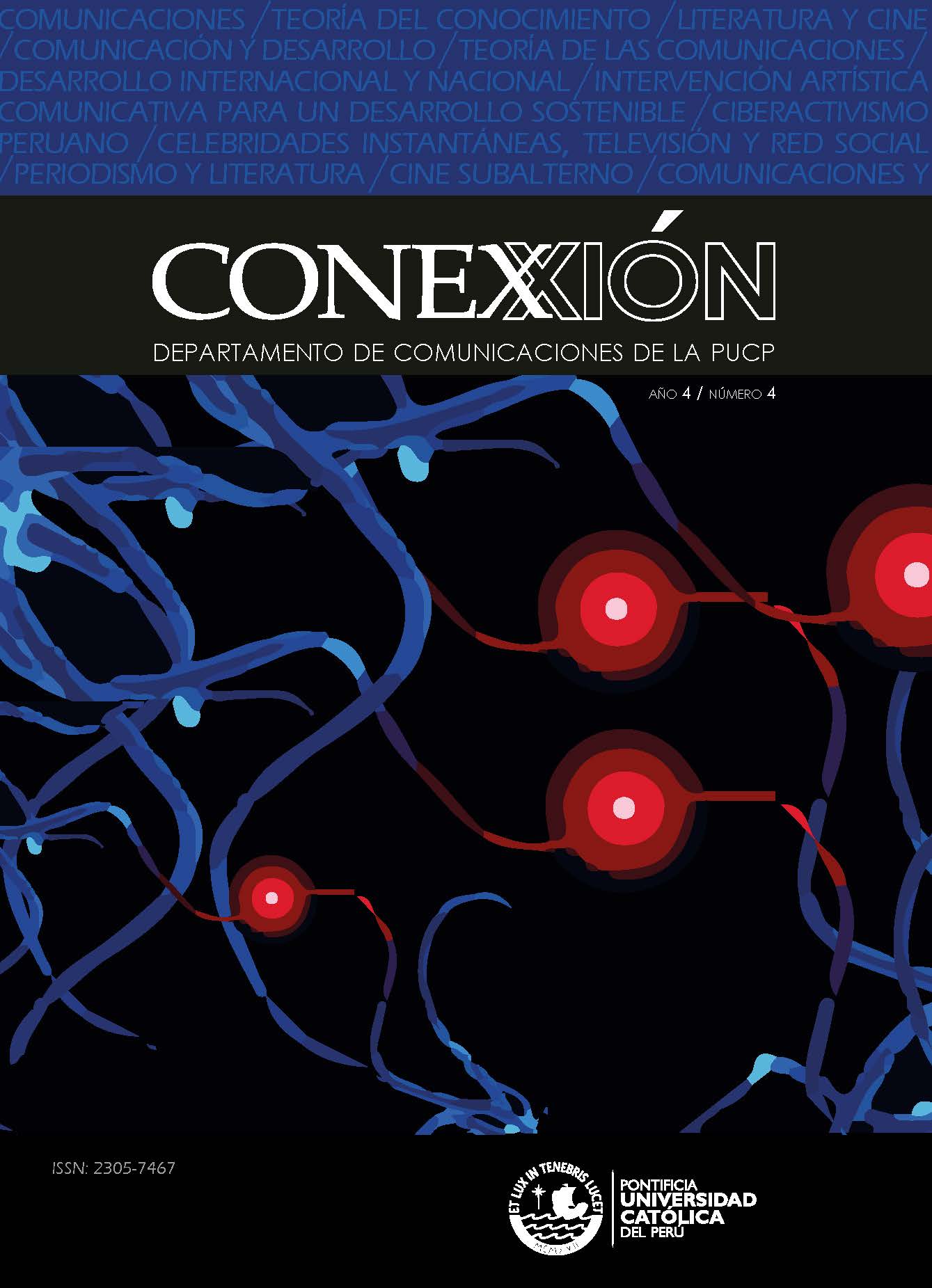Día nacional del Perú y medios de difusión
DOI:
https://doi.org/10.18800/conexion.201501.001Palabras clave:
Comunicación y política, Ceremonias cívicas, Medios masivos, PerúResumen
Este artículo ofrece una exploración teórica sobre la actuación de los medios de
difusión masiva en la celebración anual del día nacional del Perú. La exploración
se basa en la asunción general de que tal celebración es una práctica central de
los Estados modernos para mantener su legitimidad política y su continuidad
institucional, y es parte de los recursos que se despliegan para la conformación
cultural de sus ciudadanos. En este contexto, se reflexiona sobre la interacción
de los medios de comunicación masiva con las actividades ceremoniales propias
de la ocasión, y sobre las consecuencias de esta interacción para dichas prácticas
estatales. De acuerdo a lo mencionado, primero repasa algunas nociones elementales sobre el Estado y la Nación, luego examina conceptos básicos sobre
las conmemoraciones nacionales, y finalmente revisa elementos centrales de la
relación entre las ceremonias públicas y los medios de comunicación masiva y
sus implicaciones en la conformación cultural de los ciudadanos.
Descargas
Descargas
Publicado
Cómo citar
Número
Sección
Licencia
Derechos de autor 2016 Conexión

Esta obra está bajo una licencia internacional Creative Commons Atribución 4.0.














